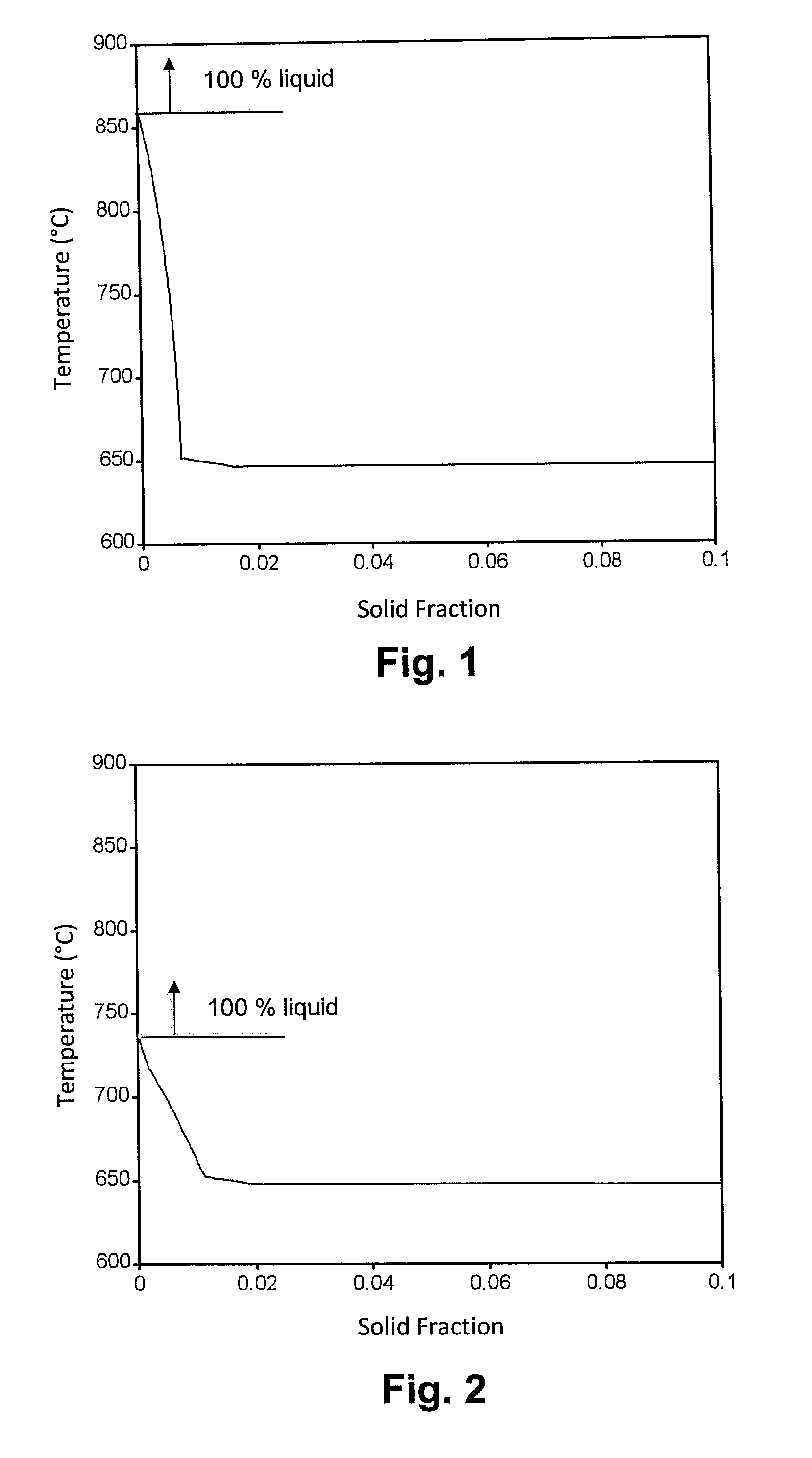Aluminum Die Casting Alloy
- Summary
- Abstract
- Description
- Claims
- Application Information
AI Technical Summary
Benefits of technology
Problems solved by technology
Method used
Image
Examples
Embodiment Construction
[0035]Dispersion strengthening of aluminum alloys relies on the creation of dispersed particles in the alloy's matrix. This strengthening mechanism is typified by alloys based on the aluminum-nickel system. Hypo-eutectic and eutectic aluminum-nickel alloys solidify in a structure that contains a fine dispersion of nickel tri-aluminide (Al3Ni) particles in a matrix comprised of a solid solution of nickel in aluminum (α-aluminum). Since nickel tri-aluminide is essentially insoluble in aluminum up to about 855° C., aluminum-nickel alloys are more stable at elevated temperatures than aluminum-silicon alloys. However, aluminum-nickel binary alloys do not posses adequate mechanical properties for most automotive applications as their room temperature tensile yield strength does not exceed 80 MPa; and therefore additional strengthening of these alloys is necessary.
[0036]Precipitation strengthening is a well-known mechanism of strengthening aluminum alloys as typified by alloys based on the...
PUM
| Property | Measurement | Unit |
|---|---|---|
| Temperature | aaaaa | aaaaa |
| Temperature | aaaaa | aaaaa |
| Temperature | aaaaa | aaaaa |
Abstract
Description
Claims
Application Information
 Login to View More
Login to View More - R&D
- Intellectual Property
- Life Sciences
- Materials
- Tech Scout
- Unparalleled Data Quality
- Higher Quality Content
- 60% Fewer Hallucinations
Browse by: Latest US Patents, China's latest patents, Technical Efficacy Thesaurus, Application Domain, Technology Topic, Popular Technical Reports.
© 2025 PatSnap. All rights reserved.Legal|Privacy policy|Modern Slavery Act Transparency Statement|Sitemap|About US| Contact US: help@patsnap.com

